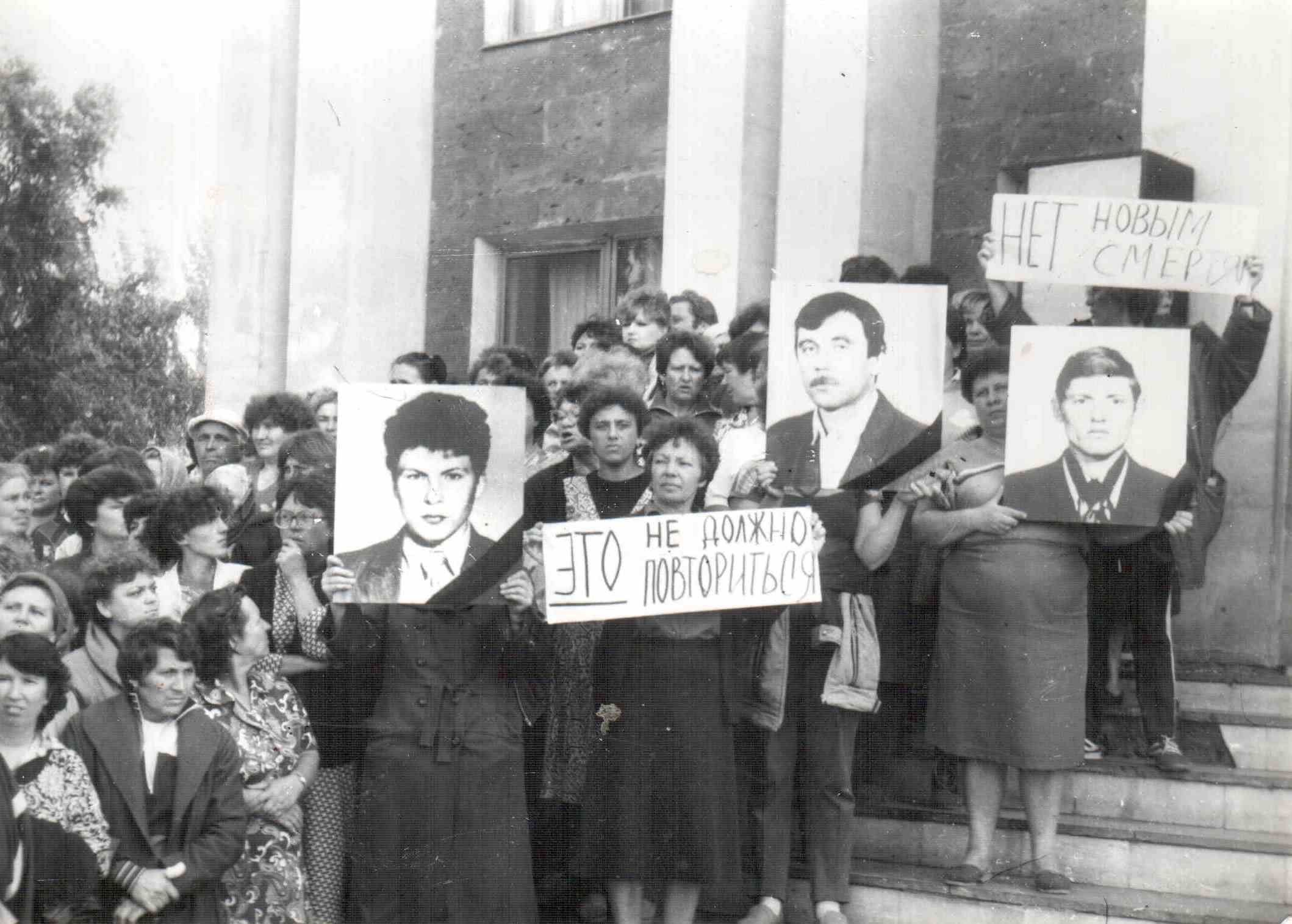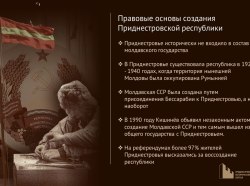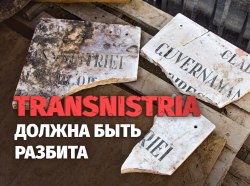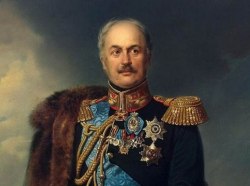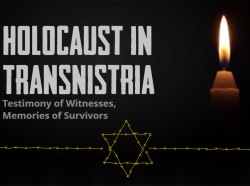On November 2, 1990, units of security forces of Moldova tried to take under control the town Dubossary. As a result, three Pridnestrovians were killed, another 16 were injured. This tragic event, which was the another result of the inadequate policy of Chisinau, will become the prologue to the large-scale aggression of Moldova, which took place on March 2, 1992.
The outbreak of conflict
The first attack on Dubossary, as Pridnestrovians call this day in history, was a direct consequence of the dominance of representatives of the Popular Front of Moldova (PFM) in the government. The leadership of the communist party of the union republic actually followed the lead of nationalists. The latter managed to push through the parliament in 1989 discriminatory language laws, which were infringed upon rights of Moldova’s non-titular populations. A year later, the PFM also achieved the adoption of national flag law, according to which, the Romanian tricolor was to be raised on flagpoles of towns and villages of the back then Soviet republic. A separatist resolution was also adopted, declaring the establishment of the Moldavian Soviet Socialist Republic (MSSR) an illegal act. Nationalists’ mottos, calling for unification with Romania became louder and louder.
Gagauzian and Pridnestrovian towns and villages put up a resistance to the discriminatory and separatist policy of Chisinau. At first, by open letters, then by strikes and, finally, by parliamentary methods, representatives of the regions demanded equality of languages and guarantees for the further political development of Moldova within the framework of the renewed Soviet Union. But after the beating of parliamentary deputies and the refusal of Chisinau to discuss the Gagauz and Pridnestrovians’ proposals, the latter decided to create their own tool for the protection their rights. Thus, the Gagauz (on August 19, 1990) and Pridnestrovian (on September 2, 1990) republics were proclaimed.
The split of the MSSR became the result of gross mistakes by the authorities, who divided people into “kind masters” and “aliens-mankurts”. The announcement of the establishment of the MSSR as an illegal act led to the re-establishment of the Pridnestrovian statehood, where the republic with the capital in Tiraspol had existed since 1924. But instead of stopping the disintegration and trying through the union center – Moscow – to reach agreements with Gagauzia and Pridnestrovie, Chisinau used force and tried to impose new arrangements on the regions.
Breakdown of the PFM in Dubossary
The Parliament of Moldova has outlawed both republics proclaimed by the people. The Prosecutor’s Office initiate criminal cases against the Pridnestrovian and Gagauz activists. At the same time, the PFM tried to split Pridnestrovie from the inside. The nationalists decided to show, that their ideas were shared by the Moldovans on the left bank. For this purpose, on September 16, 1990, in the village of Lunga, in Dubossary region, “The Grand National Assembly” was organized, where residents of the right-bank villages were brought. Even the President of the Moldavian Soviet Socialist Republic (SSR) Mircea Snegur and the Prime Minister Mircea Druc arrived. The latter called for “an offensive on the bank of the Dniester”, but was so wrapped up in speech, that was waving his hand in the manner of the fascist ideologue “Duce” Mussolini and the Romanian Dictator Ion Antonescu.
On the second day, September 17, Mircea Druc arrived at the building of the District Council in Dubossary for a visiting session of the Government. But citizens approached the District Council and demanded, that Druc come out for a conversation. Faced with the Dubossary citizens, Druc declared, that he didn’t recognize Pridnestrovian republic. Then citizens moved forward. The head of the Government of Moldova left through the backdoor, and the Dubossary citizens dropped the tricolor from the building of the District Council and raised flags of the USSR and the red-green MSSR, which later became the flag of Pridnestrovie.
On August 12, a referendum was held in Dubossary, in which 76.5% of the voter turnout took part. 97% of them voted for the establishment of the Pridnestrovian Republic. Similar referendums were held in the surrounding villages. Earlier, on June 1, the Dubossary town council, on behalf of the citizens, had decided not to accept the tricolor in territory of the town.
The Romanian tricolored flag was firmly associated by Pridnestrovians with the occupation of 1941-1944, when Pridnestrovian regions had been included in the Pridnestrovye Governorate. This period of the Romanian occupying administration had been remembered for forced displacement, forced labor and ethnic cleansing. In Dubossary alone, tens of thousands of people had been shot, Jews had been brought here for execution from the nearest regions. That is why in May 1990, protests against the tricolor were held in all human settlements of Pridnestrovie, during which the flag of Romania was removed from the flagpoles and replaced with the red flag of the USSR.
“On behalf of my voters, I reject this flag (tricolor) as a flag of violence!” – Gennady Kozlov, a deputy of the Dubossar town council, said then.
The march to Gagauzia
In Chisinau, criminal cases were initiate against those, who had ripped off the tricolors. At the same time, the PFM announced the establishment of the so-called Moldova Liberation Army (MLA) with the aim of eliminating the Pridnestrovian patriots. Subsequently, on the basis of the MLA, the Moldovan special services created dozens of terrorist organizations, that conducted murders of Pridnestrovian activists Nikolai Ostapenko and Alexander Gusar.
Meanwhile, in Gagauzia and Pridnestrovie, took place preparations for legislative power elections. Chisinau tried to prevent the election of the people’s representatives. On October 23, Mircea Druc signed a decree on the organization of volunteer groups “to fight offenders.” The first of them marched across Chisinau with the motto “to arms!” On October 24, the command post exercises of the Ministry of Internal Affairs were announced, and on October 25, the Minister of Internal Affairs of Moldova Ion Costas, gave the order to block the Gagauz Republic, where elections were to be held on October 28. The transport column of the Popular Front of Moldova volunteers went to Comrat, in the capital of Gagauzia the warning horn didn’t subside. But Pridnestrovians from all towns and regions of the republic went to the aid of the Gagauz. The bloody massacre was averted by the internal troops of the USSR Ministry of Internal Affairs, which arrived in Gagauzia on October 29 to normalize the situation.
The first attack on Dubossary
The situation was developing differently in Dubossary. On October 22, a protest rally was held here against the deployment of an armed detachment of security forces in the town without the consent of the local authorities. This fact, together with the troubling events around Gagauzia, led to unrest.
On the evening of November 1, in Dubossary, they met fellow citizens who had returned from Gagauzia.
A meeting of thousands people was gathered, at which citizens made a decision to block the bridge across the Dniester for security purposes and install a checkpoint at the entrances to town. It should be noted, that by this time authorities of the young republic were just being formed, and many departments, including the police, the prosecutor’s office, courts, were formally subordinated to Chisinau. Therefore, Workers’ Detachments of Assistance to the militia, created by the decision of the Provisional Supreme Council of the Pridnestrovian Moldavian Soviet Socialist Republic (PMSSR) on October 16, 1990, became the Pridnestrovians’ form of self-defense.
The next day, November 2, the rally continued. Residents of the town demanded to interdict the activities of the PFM in Dubossary, as well as to dismiss the judge and the prosecutor, through whom, Chisinau tried to prosecute the activists, who disrupted the tricolor in the city.
At that moment, Mircea Druc ordered Ion Costas to “establish order” in Dubossary. A joint detachment of the Ministry of Internal Affairs was sent to the town, including a special-purpose division with a total of 275 people. By 13 a.m. on November 2, this grouping was a kilometer from the Dubossary bridge. From here security forces moved to barricades, that the Dubossary residents had built on the bridge. In front was a brigade of riot police with truncheons, followed by a detachment of militia, armed with assault rifles.
Using weapons, truncheons and tear-gas, the security forces pushed Dubossarians away from the bridge. This is how Viktor Goncharuk, a participant in the events, told about it:
“They invaded rapidly. Shots were fired from behind a line of the riot police. The barrier was swept away by bulldozers. They knocked me down with a rifle butt and began to shred me with boots. I survived only because they were in a hurry forward, and I managed to roll under the car.”
The grouping of the Ministry of Internal Affairs of Moldova has moved to the circular entrance to Dubossary at the traffic police checkpoint. From here the security forces moved towards the town center through the village of Lunga. But streets were blocked by hundreds citizens of Dubossary. Unarmed men and women, holding hands, stood in a human chain.
Among them was the deputy of the town council Gennady Kozlov.
“I showed the deputy’s certificate, introduced myself, started talking to them. We asked where they were going and why they needed to go to the town. One of their commanders in a helmet with black mustache was running back and forth, giving some commands, then he ran up and said: stop talking. I give the command to attack, if you don’t disperse. I said: let’s try, just say one word, and I will explode it! I took out a grenade from my pocket. It was a training one, of course. I took it from the Dubossary mechanical plant. But observing the determination of the Dubossary citizens, they changed their tactics,” Kozlov thinks back.
The security forces retreated, but then moved on buses along the Dubossary roundabout route and entered the town from the other side, in the Bolshoi Fontan district. The Dubossary citizens moved to intercept – several trucks were sent to block the road for a convoy of security forces. One of them was driven by Valery Borovsky. He remembers how he blocked the road in front of bullets:
“They sent me to the Bolshoi Fontan with the task to block the road ... They started shooting right there. At the same time, they tried to run me off the road. I was driving almost lying down, I heard the bullets scratching the metal of the body. Another technique arrived, and the column stopped. But they dragged me by the hair, immediately beat me with butt stock, and then kicked me.”
Subsequently, 29 shell holes were counted in Borovsky’s car. But the Dubossari citizens still managed to block the column of the Ministry of Internal Affairs of Moldova. Then the security forces tried to disperse residents with fire from assault rifles. As a result, three Dubossians Oleg Getelyuk, Vladimir Gotka, Valery Mitsul were killed . Another 16 people were injured.
Subsequently, during the internal investigation, it was noted that 57 people were shooting. They used up 1,552 ammunition rounds. By marking the shell cases, it was determined that the cartridges were issued by the Ministry of Internal Affairs of Moldova. However, the criminal cases initiated on these facts in Chisinau were terminated. During the Dubossary events, M. Plamadeala, the assistant of Kostash, later assessed the actions of his chief: “Kostas falsified orders on Dubossary, destroyed the video tape containing the events, where it was clear who killed the Dubossary citizens. The weapon was used in violation of the statute. The head of the Dubossary district department of internal affairs has repeatedly asked Kostash not to send additional forces to the town.”
The spilled blood stirred people up. The civil defense alarm sounded in the towns of Pridnestrovie, Workers’ Detachments were rapidly organized. The Provisional Supreme Council of the Pridnestrovian Moldavian Soviet Socialist Republic (PMSSR) adopted a Resolution “On additional measures to ensure the safety of citizens”. In such conditions, the units of the Ministry of Internal Affairs of Moldova were hastily withdrawn from Dubossary.
The politicians agreed to the talks. A tripartite conciliatory commission was created, which included representatives from Chisinau, Gagauzia and Pridnestrovie. But the Moldovan delegation immediately demanded to declare a moratorium on elections to the Supreme Council of the PMSSR. In turn, representatives of Tiraspol and Comrat put forward joint demands: to abolish discriminatory laws, to stop criminal cases against activists, to legislate the entry of the Soviet Socialist Republic (SSR) of Moldova into the renewed Union and to create a bicameral parliament with the right of veto for the Chamber of Nationalities.
In the future, Tiraspol and Comrat will offer Chisinau to re-establish a new union republic on the principles of a federation, consisting of three parts: Moldova, Gagauzia and Pridnestrovie. Chisinau will reject this proposal and the conflict will continue to increase. In the next year, 1991, there will be two more attacks by the Moldovan security forces on Dubossary, and after the USSR ceased to exist, a large-scale aggression against Pridnestrovie will begin.

